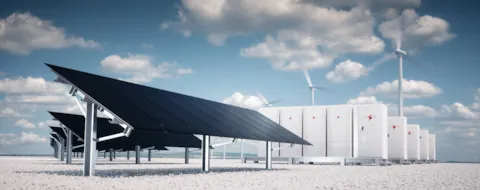2020’s hot topics in renewable energy procurement
As we start out on a new year and new decade, lets take a look at some of the hot topics that could shape the corporate PPA market in 2020.
2019 was a record-breaking year for the corporate renewable energy power-purchase agreement (PPA) market. According to BloombergNEF, over 100 companies in 23 countries signed clean energy PPAs for a total of 19.5 GW. With more companies looking to minimize their carbon footprint and more countries looking to phase out renewable energy subsidies, growth is set to continue as corporate PPAs become an increasingly important tool in funding the green energy transformation. So, as we start out on a new year and new decade, lets take a look at some of the hot topics that could shape the corporate PPA market in 2020.
Rebalancing risk in PPA contracts
In the early days of PPAs, both buyers and suppliers were happy to sign relatively simple agreements, typically based on a fixed price per MWh or a fixed percentage of a market index price. However, buyers increasingly feel that this kind of structure puts too much of the risk burden on them and are thus less willing to sign up.
Consequently, PPA structures are likely to become more complex to deliver a fairer balance of risk between supplier and consumer. Contracts need to accommodate non-trivial price dynamics such as how novel technologies, changes in government policy and new generating capacity affect market process over the lifetime of the PPA. Buyers are also pushing for PPAs with shorter lifetimes to minimize their exposure to these risks.
24/7 consumption matching
More and more companies are committing themselves 100% to renewable energy. So far, this has meant using Guarantees of Origin (GOs) to match usage and generation over a year. But a more ambitious view is starting to emerge, based on matching the supply of renewable energy to the buyer’s 24/7 consumption pattern.
Deals such as that signed by Microsoft and Vattenfall and by Daimler and Statkraft are built on real-time balancing of supply and demand to meet the buyer’s entire electricity need. The details vary from contract to contract but depend on smart combinations of wind and solar with a means to bridge lulls in these variable resources – such as hydroelectric or energy storage. As such, the proliferation of these 24/7 consumption matching PPAs could also prove a welcome kick-start for emerging energy storage technologies.
Scope 3 reductions
In addition to switching their electricity supply to low-carbon sources, companies are also increasingly looking at the impact of their wider supply chains. In doing so, they hope to reduce their so-called scope 3 emissions, and minimize their global carbon footprint.
Many larger organizations are encouraging or even requiring all companies in their supply chain to switch to renewable energy. For example, Apple’s Supplier Clean Energy program is on track to exceed its target of sourcing more than 4 GW of renewable energy within the Apple supply chain by 2020, with more than 40 suppliers already committed to green energy.
A challenge for such initiatives is that smaller companies are often not as able to source a suitable PPA as the multinationals they supply. They typically don’t have the resources or expertise necessary to carry out proper risk assessments or to originate contracts. And they don’t have the reputation to get response to their requests to tender.
Greater standardization within PPA contracts could help. But if major organizations really want to meet their scope 3 reduction goals, they may also need to think about support and tools for smaller suppliers to help them source PPAs and make the switch to renewable energy.
Cross-border PPAs in Europe
2019 was something of a breakout year for the European renewables PPA market, there the total volume reached 2 GW across more than a dozen countries. As encouraging as this is, it is still dwarfed by the US market which accounted for 15 GW.
In part this is due to tax regimes and financial regulations. But another crucial factor is that large-scale consumption and generation of renewable energy often happens in different places. In the US, this isn’t an issue because, while the consumer and generator may be in different states, the same national regulation implies. But in Europe, each country has its own regulations which may not be fully consistent with those of other nations, making it difficult for a supplier in one country to sign a long-term agreement with a consumer in another.
This is starting to change. We are seeing discussions between national regulators and at a European Union level to harmonize regulations and enable cross-border PPAs. This is a long-term issue that will require, amongst other things, more interconnects between national grids to allow suppliers to guarantee the transmission of their electricity to users in other countries. But we do expect to see some movement on these discussions in 2020, which could provide a useful stimulus for the corporate PPA market in Europe.
1/31/2020 9:00:00 AM
